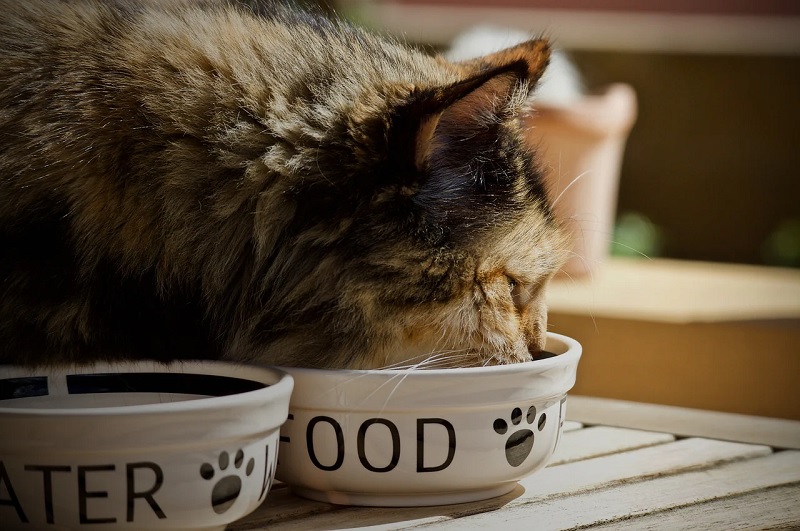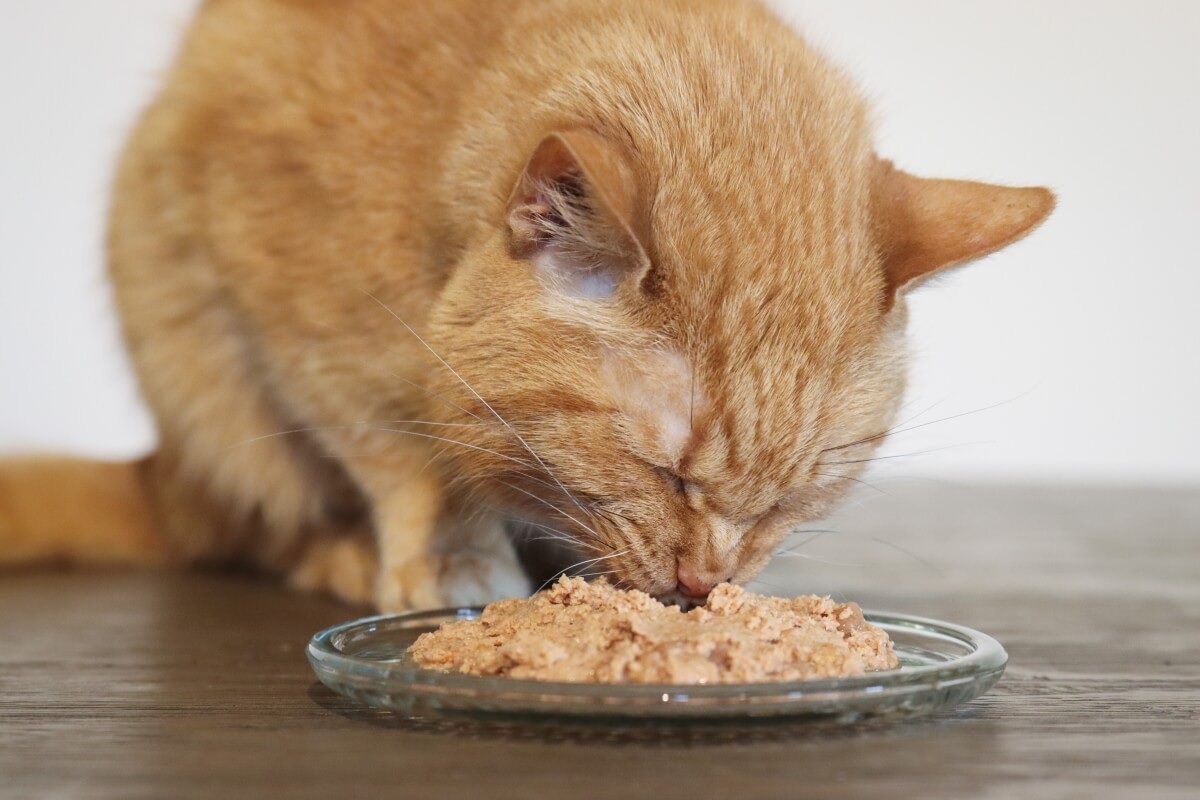Low-Carb Wet Cat Food Options
Low-carb
Cats are obligate carnivores, meaning their natural diet consists mainly of animal proteins with minimal carbohydrates. By reducing carbohydrate intake, pet owners can help manage their cats’ weight and overall wellness, ensuring they receive the nutrients necessary for a healthy lifestyle.
Certain cats require low-carb diets due to health issues such as obesity and diabetes. Carbohydrate reduction plays a significant role in managing these conditions by stabilizing blood sugar levels and promoting weight loss.
High-carb diets can lead to insulin resistance and increased fat storage, exacerbating obesity and diabetes in susceptible felines. By switching to low-carb options, pet owners can support their cats’ metabolic health, enhance energy levels, and improve overall wellness.
This dietary shift not only aids in weight management but also contributes to a more active and vibrant lifestyle for these pets.
The Benefits of Low-Carb Wet Cat Food

Low-carb wet
Below are some key benefits associated with low-carb wet
Maintaining Healthy Blood Sugar Levels
Low-carb wet
Studies indicate that cats fed low-carb diets have better glycemic control and a lower risk of developing insulin resistance. By providing a high-protein, low-carb diet, pet owners can help their cats maintain stable energy levels throughout the day, ultimately leading to improved health outcomes.
Promoting Weight Management
One of the primary benefits of low-carb wet
This is especially important for indoor cats that may lead a more sedentary lifestyle. Transitioning to a low-carb diet can facilitate gradual weight loss while preserving lean muscle mass.
Additionally, maintaining an appropriate weight can enhance mobility and reduce the risk of obesity-related health issues.
Enhancing Energy and Vitality
Low-carb diets have been shown to enhance energy levels and overall vitality in cats. By prioritizing protein and healthy fats over carbohydrates, these diets provide a steady source of energy that supports active play and exploration.
Cats on low-carb wet food often exhibit improved mood and behavior, as they are less prone to energy crashes associated with high-carb meals. This increase in energy not only benefits the
How to Identify a True Low-Carb Wet Cat Food

Identifying genuine low-carb wet
Key Nutritional Components to Look For
When selecting low-carb wet
A true low-carb option should ideally contain less than 10% carbohydrates on a dry matter basis, with many premium brands offering around 3-5%. Additionally, grain-free formulations are often preferable as they align more closely with a
Reading Cat Food Labels for What’s Important
Understanding how to read
The guaranteed analysis section will provide information on protein, fat, fiber, and carbohydrate content—look for foods with high protein (over 40%) and low carbohydrates (ideally below 10%).
Be wary of marketing claims; terms like “natural” or “premium” do not always guarantee quality or nutritional adequacy.
Hidden Carbohydrates to Avoid
Many commercial wet
It’s essential to scrutinize ingredient lists carefully; avoid products that list these fillers prominently. Instead, opt for formulas that focus on meat-based ingredients without excessive plant-based additives.
Understanding Cat Nutritional Needs
Cats have specific nutritional requirements that differ significantly from those of other pets like dogs or humans. Understanding these needs is crucial for ensuring your feline friend thrives on a balanced diet that promotes health and well-being.
Below are essential aspects of feline nutrition that highlight why low-carb diets are beneficial.
Why Cats Need Protein, Not Carbs
Cats are obligate carnivores by nature, which means their evolutionary diet primarily consisted of animal tissues with minimal carbohydrate intake. Unlike dogs or humans who can thrive on varied diets including carbohydrates, cats have adapted digestive systems that are not equipped to handle high levels of carbs effectively.
Their bodies rely on protein as the primary source of energy; thus, feeding them low-carb diets aligns with their natural nutritional needs and promotes optimal health.
The Role of Fat in a Low-Carb Cat Diet
Healthy fats play a significant role in a low-carb
Additionally, omega-3 and omega-6 fatty acids found in fish oils contribute to skin health and reduce inflammation, further enhancing overall well-being in cats.
Moisture Content in Wet Food
Wet
Proper hydration supports urinary tract health and prevents issues like kidney disease or urinary crystals. Moreover, the moisture-rich nature of wet food complements the high-protein content essential for a balanced diet.
Types of Low-Carb Wet Cat Food Available
When exploring options for low-carb wet
Grain-Free Options
Grain-free wet
Brands like Tiki
Limited Ingredient Diets (LID) for Cats
Limited ingredient diets (LID) are ideal for cats with food sensitivities or allergies seeking low-carb options. These diets typically feature fewer ingredients while emphasizing high-quality proteins as the main component.
LID formulations help reduce potential allergens while maintaining a low carbohydrate profile—making them suitable for sensitive stomachs or specific dietary restrictions.
Raw-Inspired Wet Cat Food
Raw-inspired wet
Prescription Low-Carb Wet Foods for Cats with Diabetes
Veterinary-prescribed low-carb wet foods specifically target diabetic cats by providing controlled carbohydrate levels tailored to manage blood sugar effectively. Brands like Hill’s Prescription Diet m/d offer specialized formulations designed to support diabetic management—ensuring proper nutrition without compromising feline health.
Top Low-Carb Wet Cat Food Brands
When it comes to feeding your feline friend, choosing a low-carb wet
1. Hound & Gatos
Hound & Gatos is well-regarded for its commitment to a species-appropriate diet, focusing solely on animal ingredients. Their products are grain-free and contain no plant-based fillers, making them an excellent choice for low-carb feeding. Each batch is DNA tested to ensure the quality and authenticity of the ingredients, which sets them apart from many competitors.
2. Tiki Cat
Tiki
3. Weruva
Weruva prides itself on using human-grade ingredients and offers a range of low-carb wet foods. Their recipes typically contain between 1% and 3% carbohydrates, focusing on protein-rich formulations that are appealing to cats. The brand is known for its high-quality meat sources and minimal processing, ensuring that your
4. Dr. Elsey’s Clean Protein
This brand has gained popularity for its balanced nutritional profile, offering high protein content with low carbohydrates. All flavors come in a smooth paté texture, making it easy for cats to eat. However, it’s important to note that some varieties contain multiple protein sources, which may not suit every
5. NULO Freestyle
NULO Freestyle offers a variety of wet food options that are low in carbs, with many recipes containing less than 10% carbohydrates by calories. Their formulations are designed to support lean muscle mass while keeping your
6. Wellness Core
Wellness Core is another excellent choice for those seeking high-protein, low-carb wet food options. The brand focuses on natural ingredients and avoids fillers like grains and potatoes, which can contribute to higher carbohydrate levels. Their recipes often feature multiple sources of protein to keep your
Best Low-Carb Wet Foods for Kittens
When it comes to feeding your kitten, choosing the right wet food is crucial for their growth and health. Low-carb wet foods can be particularly beneficial, as they align with a kitten’s natural dietary needs, which are primarily high in protein and low in carbohydrates. Here are some of the best options available:
Top Low-Carb Wet Foods for Kittens
- Purina Pro Plan Kitten Salmon and Ocean Fish Entree
- This wet food is highly recommended for its high-quality protein content and essential omega fatty acids, supporting healthy growth and development. It contains about 30% protein and is formulated to meet AAFCO standards for kittens.
- Wellness Complete Health Kitten Chicken Recipe
- Known for its high protein levels and natural ingredients, this food provides a balanced diet with minimal carbohydrates. It’s designed to support the overall health of growing kittens.
- Tiki
Cat After Dark Chicken & Quail Egg- This option stands out for its low carbohydrate content and high protein levels. The first six ingredients are animal-based, making it an excellent choice for kittens needing a protein-rich diet.
- Felix As Good as it Looks Kitten Food
- With around 15% protein, this food is a staple that many
cat owners find effective. It offers a good balance of texture and flavor, appealing to picky eaters while maintaining low carb levels.
- With around 15% protein, this food is a staple that many
- Royal Canin Kitten Loaf in Sauce
- This formula is particularly suitable for kittens with sensitive stomachs. It provides a balanced mix of nutrients and hydration while keeping carbohydrate content low.
Benefits of Low-Carb Wet Foods
- High Protein Content: Kittens require a diet rich in protein for muscle development and energy. Low-carb wet foods typically have higher protein levels compared to dry foods.
- Hydration: Wet foods contain significant moisture (up to 78%), which helps keep kittens hydrated—essential for their overall health, especially if they are reluctant to drink water.
- Digestibility: Many kittens have sensitive stomachs, and wet food is often easier to digest than dry kibble, reducing the risk of gastrointestinal issues.
- Variety of Flavors: Cats can be finicky eaters, so offering a range of flavors like chicken, fish, or lamb can help maintain their interest in meals.
Homemade Low-Carb Wet Cat Food: Is It a Good Idea?
Making homemade low-carb wet
However, this approach comes with both benefits and challenges that must be carefully considered before proceeding further into this territory! Below are some insights into homemade options available today!
Benefits of Making Your Own Cat Food
Creating homemade low-carb wet
This approach empowers caregivers by enabling them to select fresh meats alongside appropriate supplements tailored explicitly toward feline health requirements.
Risks and Challenges of Homemade Cat Food
While homemade diets offer several advantages regarding customization, potential risks include nutritional imbalances if not properly formulated according to veterinary guidelines—underscoring the importance of consulting professionals before committing fully toward home-prepared meals intended solely for feline consumption.
Simple Low-Carb Wet Cat Food Recipes
For those interested in preparing homemade options safely tailored toward feline preferences without compromising nutrition—simple recipes featuring chicken broth combined with ground meats like turkey or beef alongside select vegetables (avoiding starchy options) can provide tasty alternatives meeting dietary restrictions efficiently.
Transitioning Your Cat to a Low-Carb Wet Food Diet
Transitioning your
Tips for a Smooth Transition
Transitioning your
Common Challenges When Changing Diets
Finicky eaters may present challenges during transitions; experimenting with different flavors or textures within acceptable ranges can encourage acceptance among hesitant felines reluctant towards unfamiliar tastes previously unencountered throughout their feeding history priorly established before initiating changes toward healthier choices available now offered instead.
Monitoring Your Cat ’s Health During the Transition
Monitoring your
Low-Carb Wet Cat Food for Senior Cats
Senior cats often face unique challenges regarding nutrition due age-related changes affecting metabolism! Incorporating proper dietary choices becomes increasingly important during this stage life! Below we explore how adopting suitable strategies may benefit aging felines tremendously!
Special Nutritional Needs of Older Cats
Senior cats often require tailored nutrition due to changing metabolic rates; incorporating low-carb wet foods supports joint health by providing adequate protein levels necessary while minimizing excess calories potentially leading toward unwanted weight gain affecting mobility adversely impacting quality life experienced daily enjoyed regularly lived through every moment shared together spent together collectively amongst each other here today!
Low-Carb Wet Cat Food for Kittens
Kittens have distinct nutritional requirements compared adult cats due rapid growth phases occurring during early development! Understanding how best meet these needs critical ensuring healthy foundation laid down future well-being! Below we delve deeper into considerations surrounding kitten-specific diets!
Are Low-Carb Diets Suitable for Growing Kittens?
While kittens require higher protein intake during growth phases due developmental demands placed upon them naturally occurring throughout early life stages experienced initially first encountered previously encountered earlier along journey undertaken previously traveled thus far reached until now arrived here today!
However caution must be exercised when introducing lower carbohydrate options since young growing bodies need adequate caloric intake provided consistently maintained regularly throughout entire growth cycle completed successfully achieved ultimately reached desired outcomes obtained eventually attained!
Conclusion
Selecting the best low-carb wet






